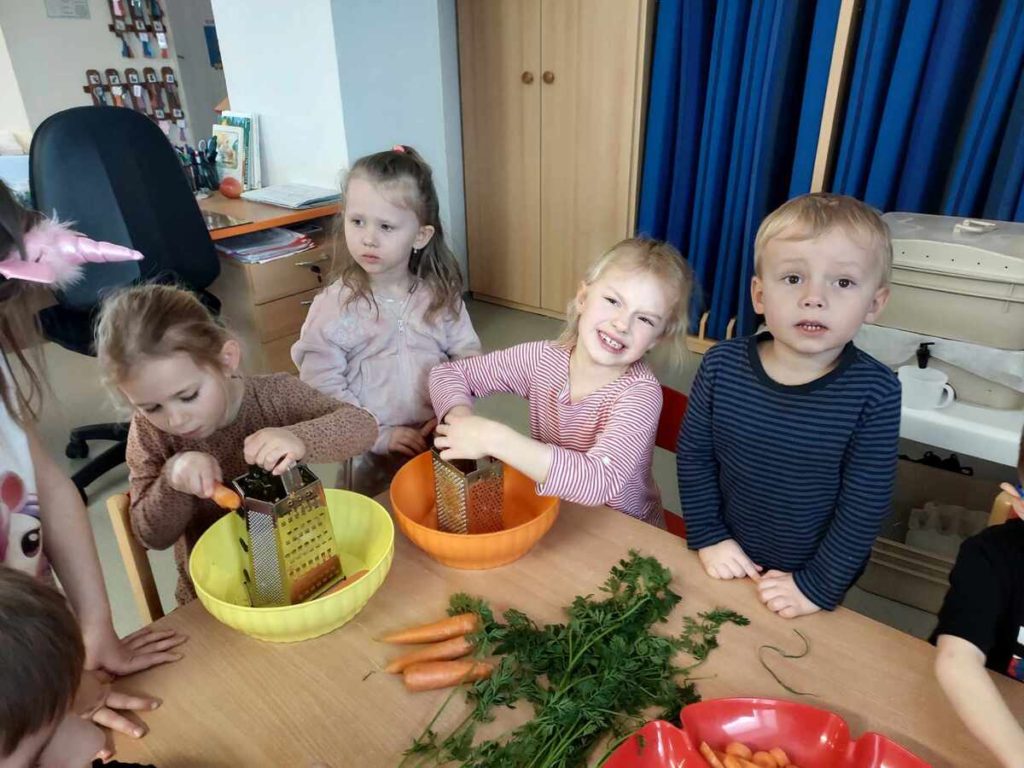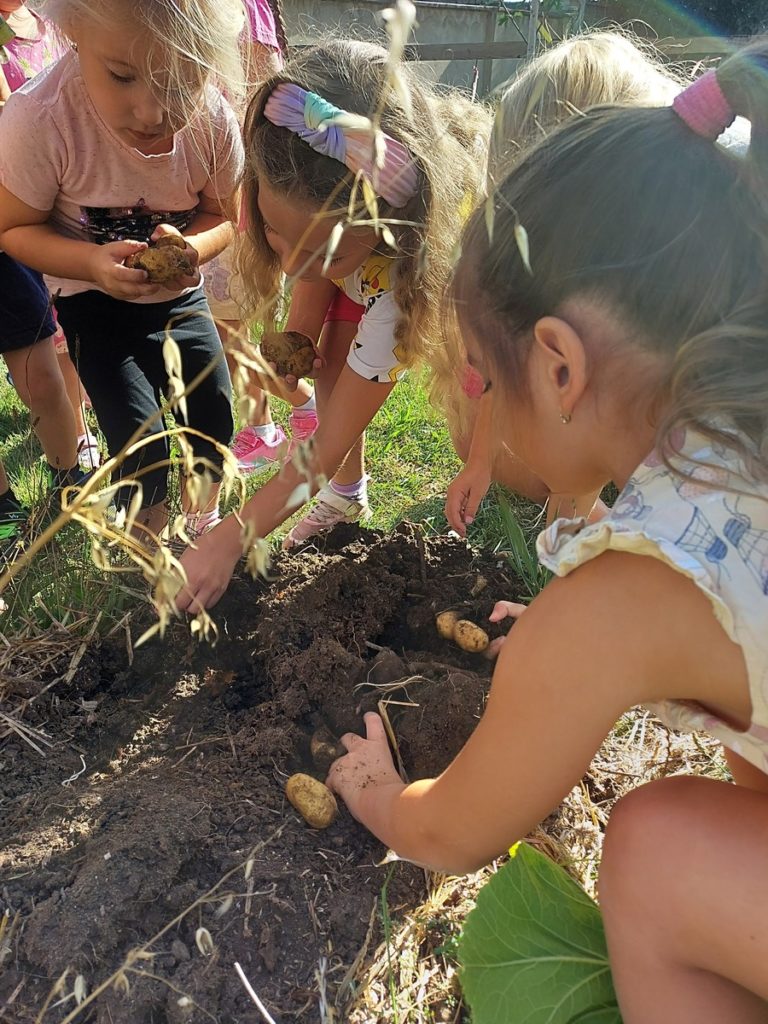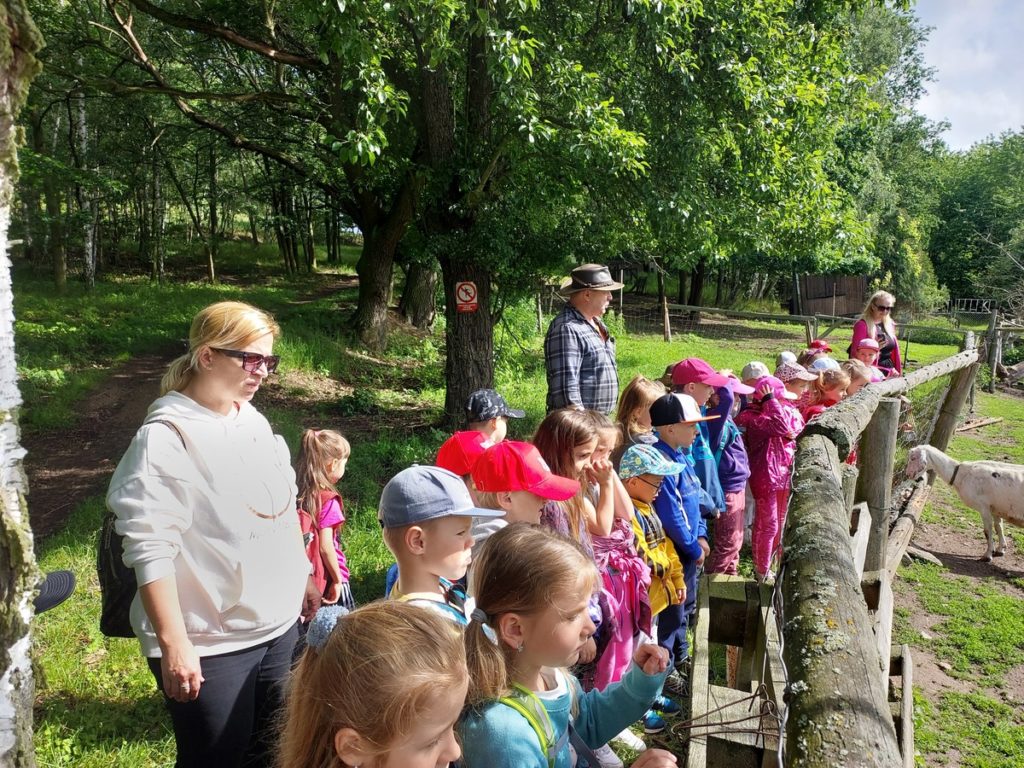Dobroměřice Kindergarten is the first school to receive the gold certificate from the SchoolFood4Change initiative Whole School Food Approach (WSFA), recognizing its commitment to healthy and sustainable eating habits. The WSFA concept has enhanced menu quality and diversity, deepened children’s relationships with food, and fostered a positive environment. Children participate actively in meal preparation and have become more open to new flavours and increased interest in nutritious snacks. The initiative has attracted significant interest from parents.
Leadership and Vision
The kindergarten, caring for 56 children aged 3 to 6, has participated in the Czech Really Healthy School program for years. Joining SchoolFood4Change was a step to further improve and inspire development. Headmistress Ludmila Jirotková has led the school’s efforts, emphasizing the practical benefits of WSFA. Healthy eating is seen as a holistic relationship with nature, community, and self. She believes that nutritious food can be both enjoyable and beneficial.

What specific changes has your preschool implemented to reach the gold level? Can you share some examples?
To achieve gold certification, we have made several changes:
Healthy and balanced diet: We emphasize variety, quality, and nutritional balance in our menus. We use fresh, seasonal, and local foods while systematically reducing processed products and added sugar.
Children’s nutrition education: We guide children to understand food origins, its importance for health, and develop good eating habits and mealtime etiquette.
Hands-on experience with food: We regularly organize visits to local farms and actively involve children in simple culinary activities within the kindergarten.
Prevention of food waste: We encourage children to be mindful about food and explain the importance of taking responsibility for the food to minimize foodwaste. Several times a year, we conduct weekly waste prevention projects during which we monitor the amount of leftovers. We’ve created a special challenge for children – the class with the least amount of leftovers earns the privilege of choosing the menu for morning snacks the following week.
Collaboration with parents: We organize snack tastings, provide parents with current information on healthy nutrition for children, and actively involve them in the process of implementing changes.
Continuous improvement and feedback: We continuously monitor current trends in healthy eating, collaborate with nutrition experts, and incorporate feedback from parents and staff.
Challenges and Solutions: Aligning the vision among stakeholders and gaining parental involvement required discussions, planning, and transparent communication. Workshops and food tastings helped overcome initial scepticism.

Tell us Ludmila, how did you involve children, parents, and staff in the initiative?
All stakeholders are involved in the changes we’ve implemented. Children learn about food not only in the classroom environment but also through activities in the garden and kitchen. In our edible garden, they have opportunities to grow their own herbs and vegetables, work hands-on, observe the growing process, and understand the effort and care required to bring food to their plates. Through this process, they develop a deeper relationship with food and gain comprehensive understanding of its journey from farm to table.
Teaching staff and cooks receive systematic training and proactively contribute innovative suggestions to improve school meals. We’ve engaged parents through community events, themed challenges, and farm days. Additionally, we’ve initiated educational workshops, informative posters, and recently implemented short online seminars to ensure information access for those unable to participate in person.
Advice for Other Schools
If you would give advice to other schools who want to work with the Whole School Approach to Food, what would that be?
We recommend starting with incremental steps and maintaining effective communication with all stakeholders. Any transformation requires adequate time and support. Involving not only children but also parents and staff is essential. And above all—don’t be afraid to experiment! Not all innovations take hold immediately, but when you see positive responses from the children, it brings immense satisfaction.

